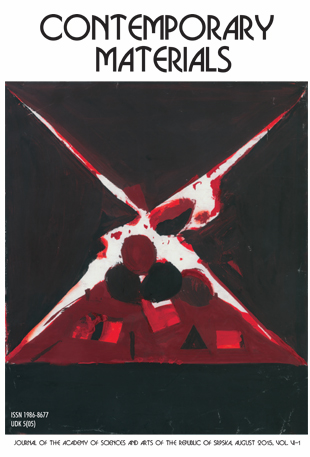INFLUENCE OF GEOLOGICAL PARAMETERS ON THE INDOOR RADON CONCENTRATION IN THE CITY OF TREBINJE
DOI:
https://doi.org/10.7251/COMEN2301064CAbstract
The paper deals with the analysis of the indoor radon concentration results measured in four schools of Trebinje city and taking into consideration their geological background and its characteristics. There have been 13 measurements and the results showed the range of 75 Bq/m3 to 4244 Bq/m3. Some of the indoor radon concentrations were very high, up to 15 times higher than recommended ones reaching the level of 300 Bq/m3. In each of the four schools there are spots with the high geogenic potential and, 38 % results show a concentration higher than 1100 Bq/m3, which further characterize this area as Radon Priority Area. From the geological point of view, the geological sheet Trebinje represents a part of Mesozoic and Paleogenic complex which build the outdoor Dinarides part. There are also different varieties of calcium carbonate and dolomite areas with sporadic occurrence of sandstones (pescari) and marlstones (laporci) accumulated at the end of the Paleogene period so that lithological content is pretty simple. The main part of the terrain is represented by sediments originated from Mesozoic and Paleogenic structures which appear along with greater dislocation in narrow strings.
